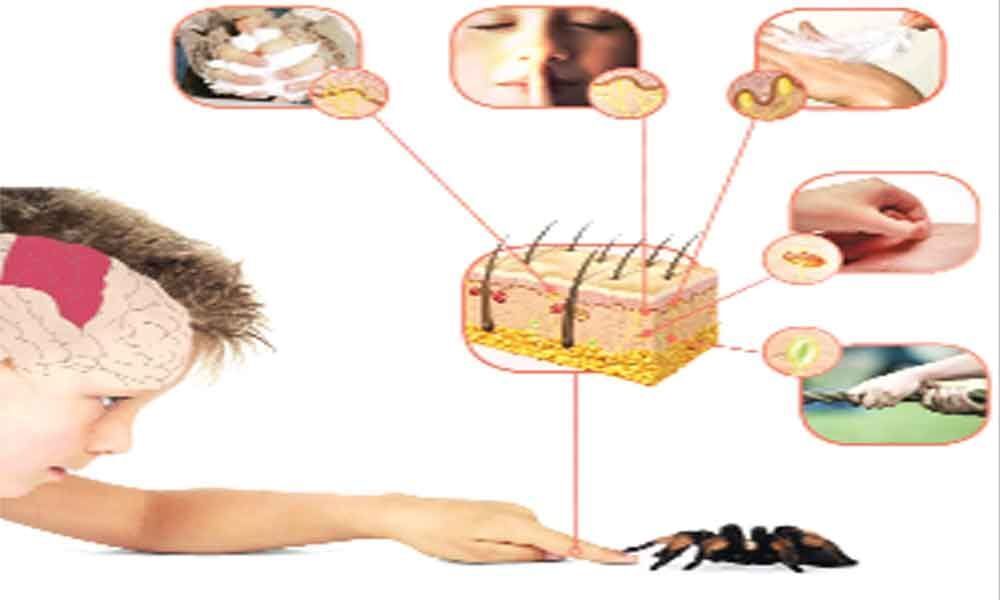Live
- Today’s welfare measures aim to empower: Nirmala Sitharaman
- Six scholars, including two women, win Infosys Prize 2024
- Gurukula zonal level sports meet concludes
- Vagdevi Jr College student selected for national basketball tourney
- Maoist area committee member arrested
- Collectorate staff protest attack on DC
- Villagers urge authorities to continue launch service even after construction of bridge
- MLA Padmavathi launches free lunch for readers
- Police high-handedness sparks outrage in Kodangal
- Khichi elected mayor of Delhi
Just In

Our skin acts as the protective barrier between our internal body systems and the outside world. Its ability to perceive touch sensations gives our brains a wealth of information about the environment around us, such as temperature, pain, and pressure.
Our skin acts as the protective barrier between our internal body systems and the outside world. Its ability to perceive touch sensations gives our brains a wealth of information about the environment around us, such as temperature, pain, and pressure. Without our sense of touch, it would be very hard to get around in this world! We wouldn't feel our feet hitting the floor when we walked, we wouldn't sense when something sharp cut us, and we wouldn't feel the warm sun on our skin. It is truly amazing how much information we receive about the world through our sense of touch, and although we still don't know all the ins and outs of how the skin perceives touch, what we do know is interesting.
Skin anatomy: The skin is composed of several layers. The very top layer is the epidermis and is the layer of skin you can see. In Latin, the prefix "epi-" means "upon" or "over." So the epidermis is the layer upon the dermis (the dermis is the second layer of skin). Made of dead skin cells, the epidermis is waterproof and serves as a protective wrap for the underlying skin layers and the rest of the body. It contains melanin, which protects against the sun's harmful rays and also gives skin its color. When you are in the sun, the melanin builds up to increase its protective properties, which also causes the skin to darken. The epidermis also contains very sensitive cells called touch receptors that give the brain a variety of information about the environment the body is in.
The second layer of skin is the dermis. The dermis contains hair follicles, sweat glands, sebaceous (oil) glands, blood vessels, nerve endings, and a variety of touch receptors. Its primary function is to sustain and support the epidermis by diffusing nutrients to it and replacing the skin cells that are shed off the upper layer of the epidermis. New cells are formed at the junction between the dermis and epidermis, and they slowly push their way towards the surface of the skin so that they can replace the dead skin cells that are shed. Oil and sweat glands eliminate waste produced at the dermis level of the skin by opening their pores at the surface of the epidermis and releasing the waste.
The bottom layer is the subcutaneous tissue which is composed of fat and connective tissue. The layer of fat acts as an insulator and helps regulate body temperature. It also acts as a cushion to protect underlying tissue from damage when you bump into things. The connective tissue keeps the skin attached to the muscles and tendons underneath.
Somatosensory system: The ability to sense touch: Our sense of touch is controlled by a huge network of nerve endings and touch receptors in the skin known as the somatosensory system. This system is responsible for all the sensations we feel – cold, hot, smooth, rough, pressure, tickle, itch, pain, vibrations, and more. Within the somatosensory system, there are four main types of receptors: mechanoreceptors, thermoreceptors, pain receptors, and proprioceptors.
Before we dig further into these specialized receptors, it is important to understand how they adapt to a change in stimulus (anything that touches the skin and causes sensations such as hot, cold, pressure, tickle, etc). A touch receptor is considered rapidly adapting if it responds to a change in stimulus very quickly.

© 2024 Hyderabad Media House Limited/The Hans India. All rights reserved. Powered by hocalwire.com







